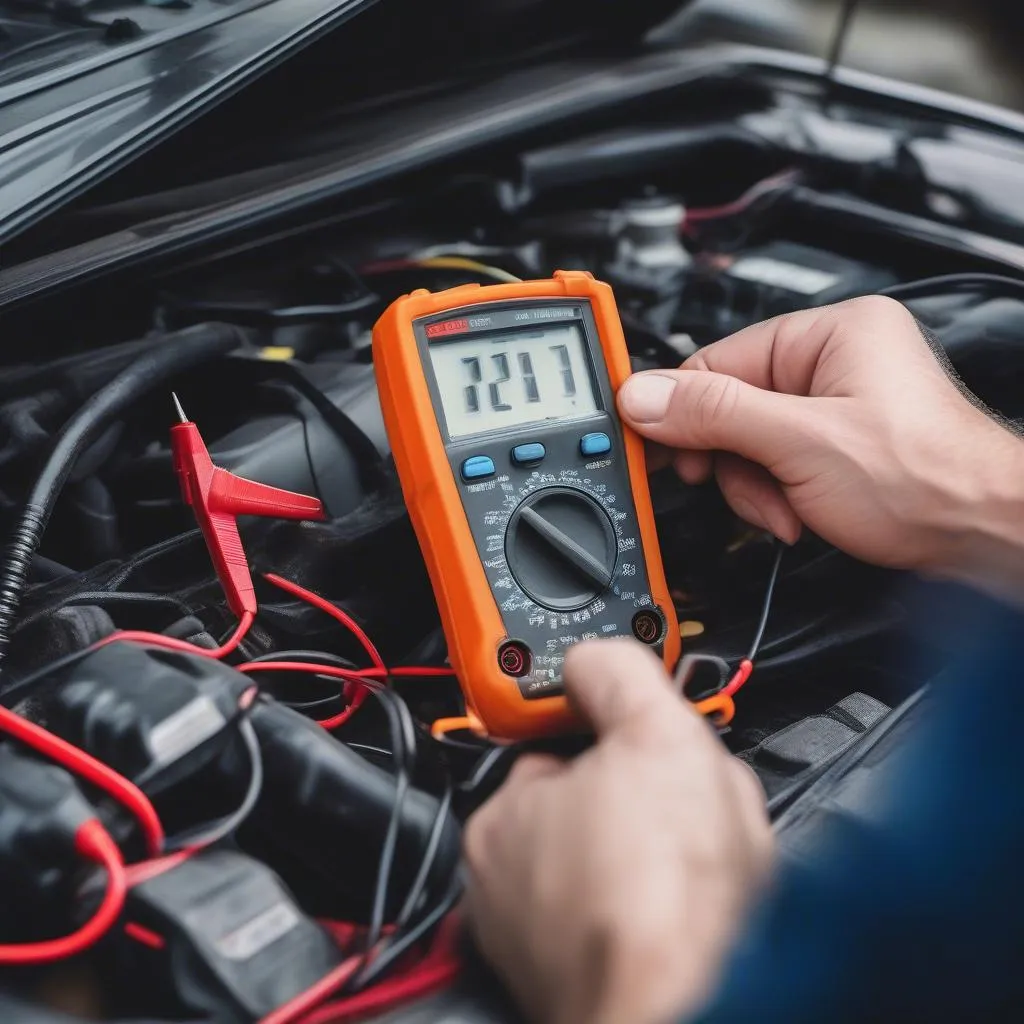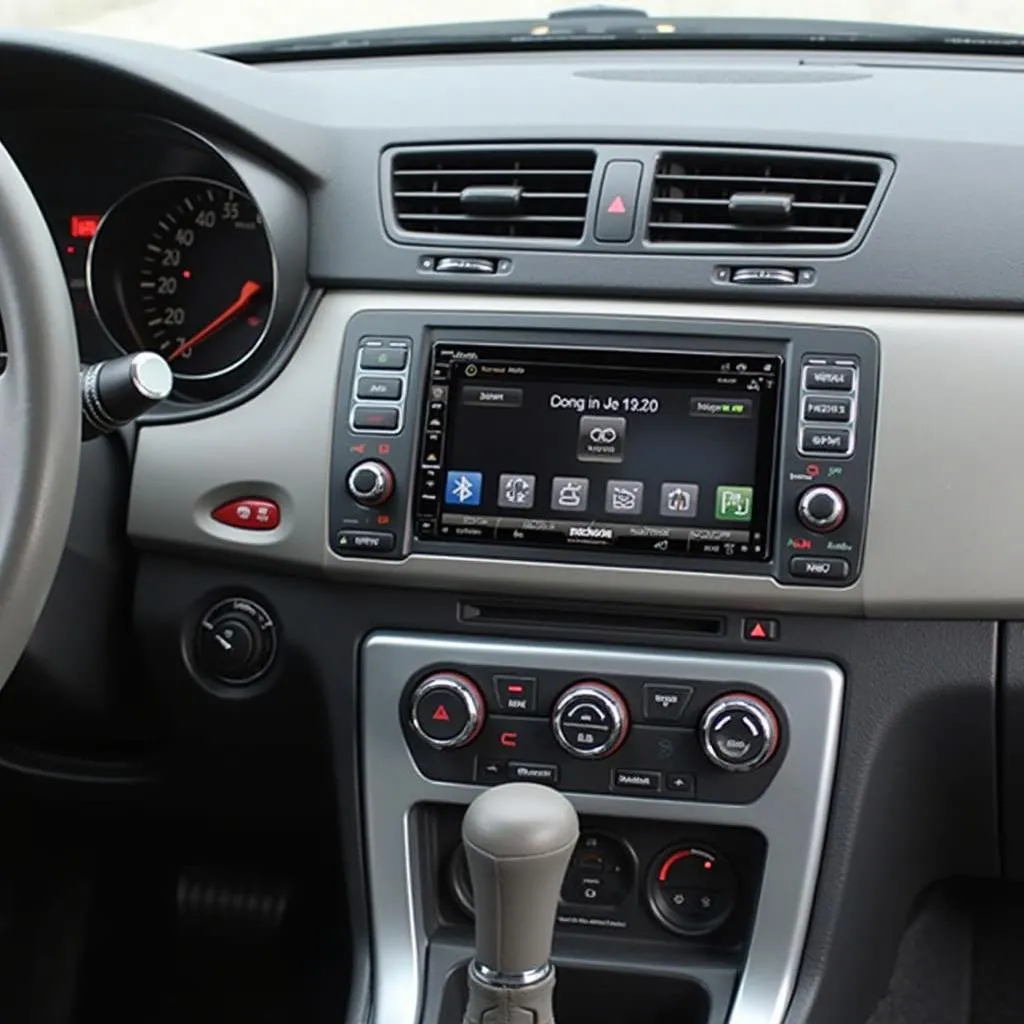Your 2004 Toyota’s brake warning light is stubbornly illuminated, and you’re understandably concerned. This persistent light can indicate a range of issues, from simple fixes to more serious problems requiring professional attention. This guide will walk you through the common causes of a 2004 Toyota brake warning light staying on, how to diagnose the issue, and some potential solutions.
Understanding the Brake Warning Light
The brake warning light is a critical safety feature, designed to alert you to potential problems within your braking system. In a 2004 Toyota, this light can be triggered by several factors, some more serious than others. Ignoring this warning can lead to costly repairs and potentially dangerous driving situations. Understanding what might be causing the light to stay on is the first step towards addressing the problem.
Common Causes of a Persistent Brake Warning Light
Several factors can cause the brake warning light to stay on in a 2004 Toyota. These include:
- Low Brake Fluid: This is the most common culprit. Brake fluid levels naturally decrease over time due to wear and tear on the brake pads.
- Worn Brake Pads: Thin brake pads trigger a sensor that activates the warning light.
- Faulty Brake Light Switch: This switch, located near the brake pedal, can malfunction, causing the warning light to remain on even when the brakes aren’t engaged.
- Parking Brake Engaged: Sometimes, the simplest explanation is the correct one. Make sure the parking brake is fully released.
- ABS Issues: Problems with the Anti-lock Braking System (ABS) can trigger the brake warning light. This is a more complex issue and usually requires professional diagnosis.
- Faulty Sensor: A malfunctioning sensor within the braking system can send inaccurate signals, causing the light to illuminate.
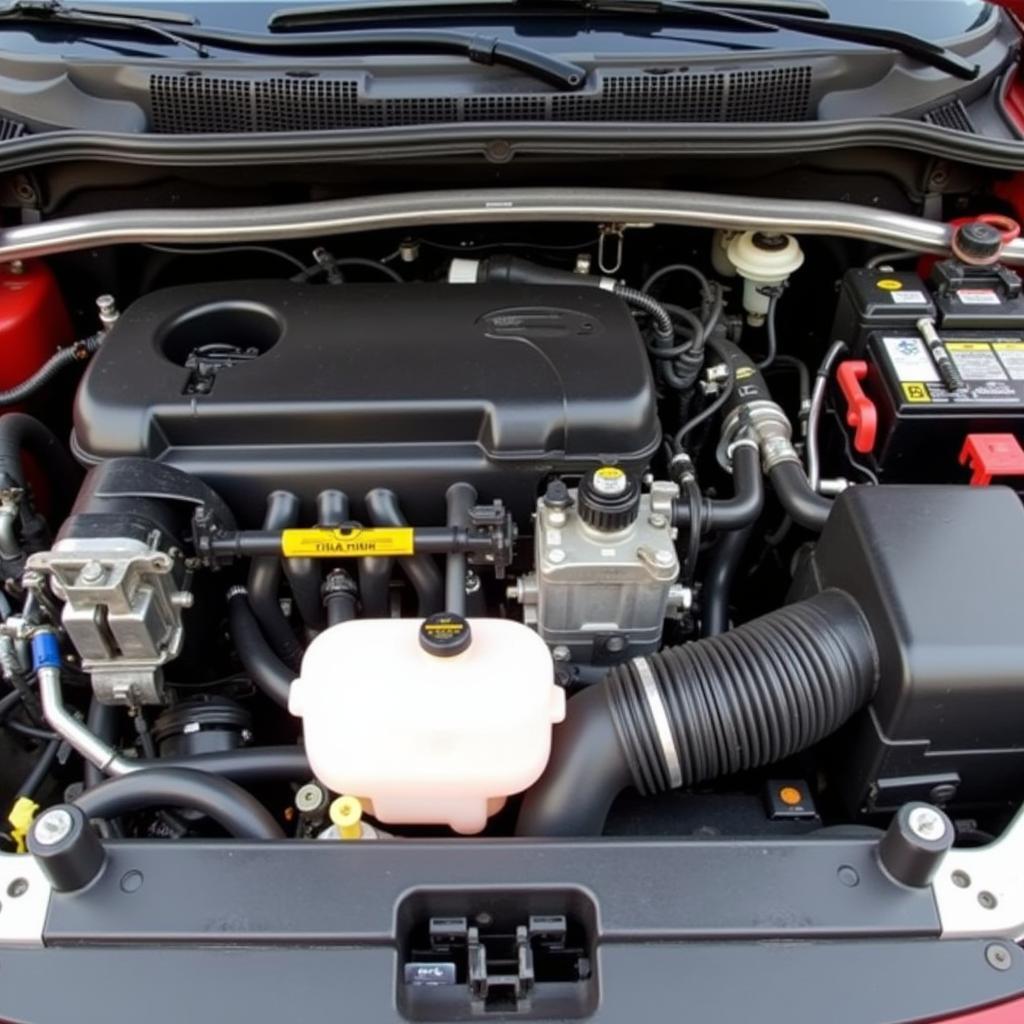 Checking Brake Fluid Reservoir in a 2004 Toyota
Checking Brake Fluid Reservoir in a 2004 Toyota
Diagnosing the Problem
Diagnosing the issue requires a systematic approach. Start with the simplest checks:
- Check the Parking Brake: Ensure the parking brake is completely disengaged.
- Inspect Brake Fluid Level: Locate the brake fluid reservoir under the hood and check the fluid level. It should be between the minimum and maximum lines.
If the brake fluid is low, add the correct type of brake fluid for your 2004 Toyota. Refer to your owner’s manual for the recommended fluid type. If the light remains on after topping off the fluid, you likely have a leak or worn brake pads.
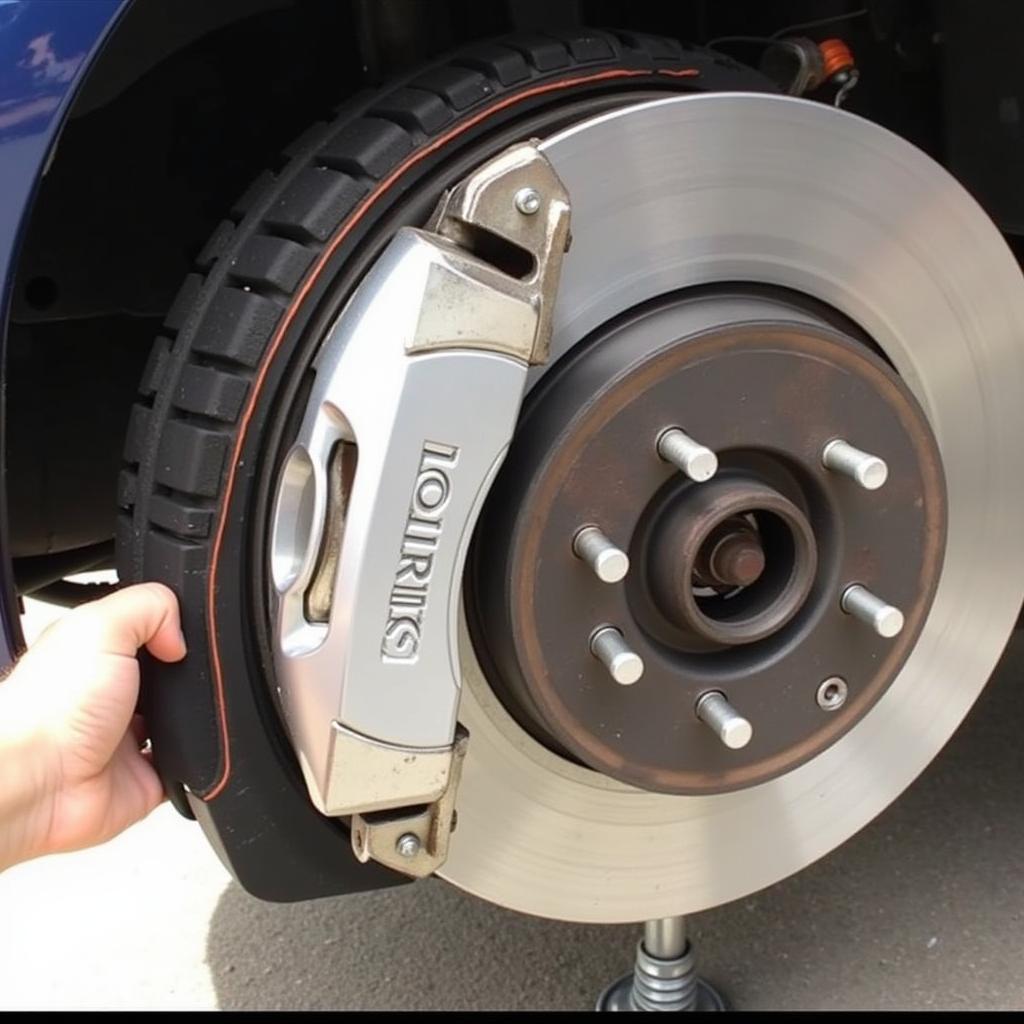 Inspecting Brake Pads on a 2004 Toyota
Inspecting Brake Pads on a 2004 Toyota
- Inspect Brake Pads: Visually inspect the brake pads through the wheel spokes. If they appear thin or worn down, they likely need replacing.
If the parking brake and brake fluid levels are fine, and the brake pads appear to have sufficient life, you might be dealing with a more complex issue, such as a faulty brake light switch, ABS problems, or a faulty sensor. In this case, it’s best to consult a qualified mechanic.
When to Seek Professional Help
If you’ve performed the basic checks and the brake warning light persists, it’s time to seek professional help. A qualified mechanic can diagnose more complex problems using specialized diagnostic tools. Delaying repairs can exacerbate the issue and lead to more expensive repairs down the line.
“Addressing brake warning lights promptly is crucial for safety,” says David Miller, ASE Certified Master Technician. “Ignoring the warning can lead to significant damage and compromise your ability to stop effectively.”
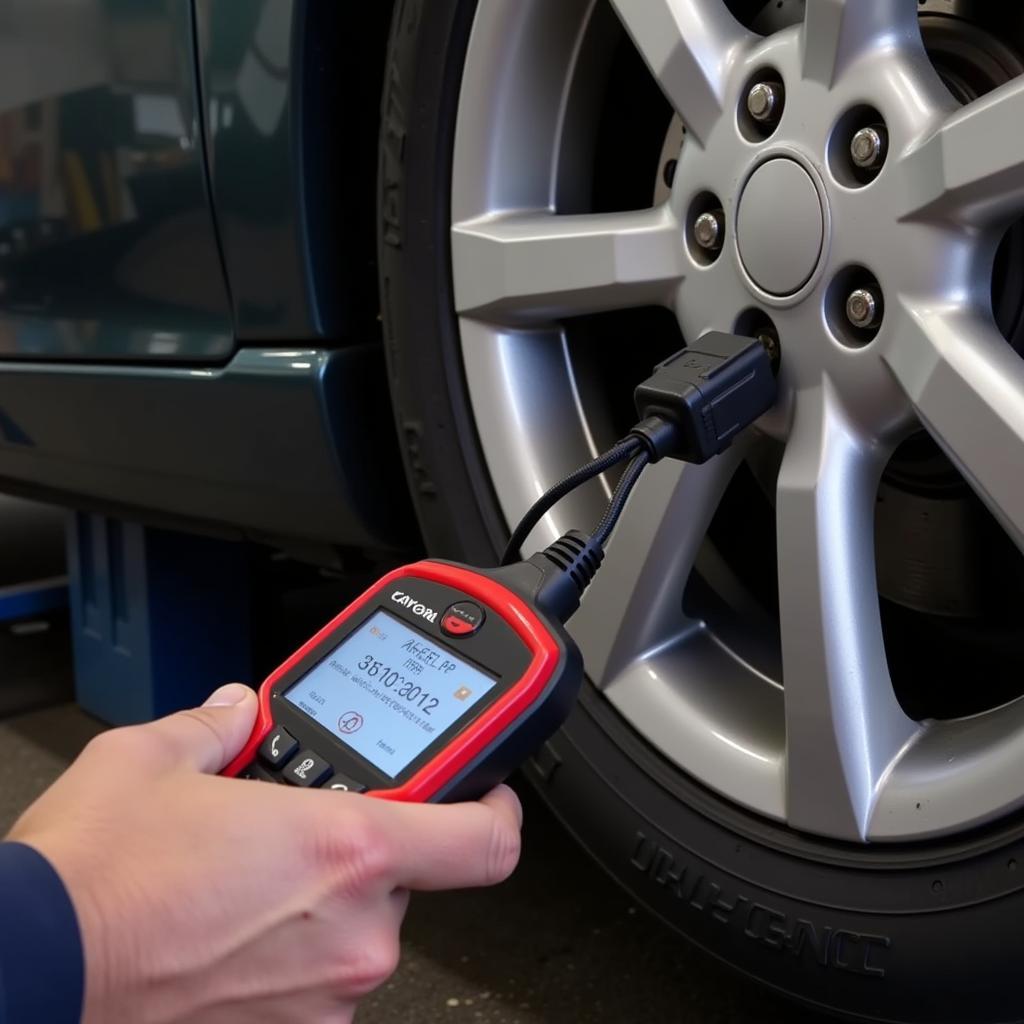 Using a Diagnostic Scanner on a 2004 Toyota ABS System
Using a Diagnostic Scanner on a 2004 Toyota ABS System
Conclusion
A 2004 Toyota brake warning light that won’t go off signals a potential problem with your braking system. Addressing the issue promptly is crucial for your safety and can prevent costly repairs in the long run. While some fixes, like topping off brake fluid, are simple DIY tasks, more complex issues require the expertise of a qualified mechanic. Don’t ignore this vital warning – address the 2004 toyota brake warning light promptly.
“Regular maintenance is key to preventing brake problems,” adds Miller. “Routine brake inspections can identify potential issues early, saving you time and money in the long run.”
FAQ
- What does the brake warning light mean? It indicates a potential problem within your braking system, such as low brake fluid or worn brake pads.
- Can I drive with the brake warning light on? It’s not recommended. Driving with a persistent brake warning light can be dangerous.
- How do I check my brake fluid level? Locate the brake fluid reservoir under the hood and check the fluid level against the minimum and maximum lines.
- How often should I replace my brake pads? Brake pad lifespan varies depending on driving conditions. Consult your owner’s manual for recommended replacement intervals.
- What should I do if the light stays on after adding brake fluid? Consult a qualified mechanic. You may have a leak or a more complex issue.
- Can a faulty brake light switch cause the brake warning light to stay on? Yes, a malfunctioning brake light switch can trigger the warning light.
- What is the cost of fixing a brake warning light issue? The cost varies depending on the underlying problem and labor rates.

